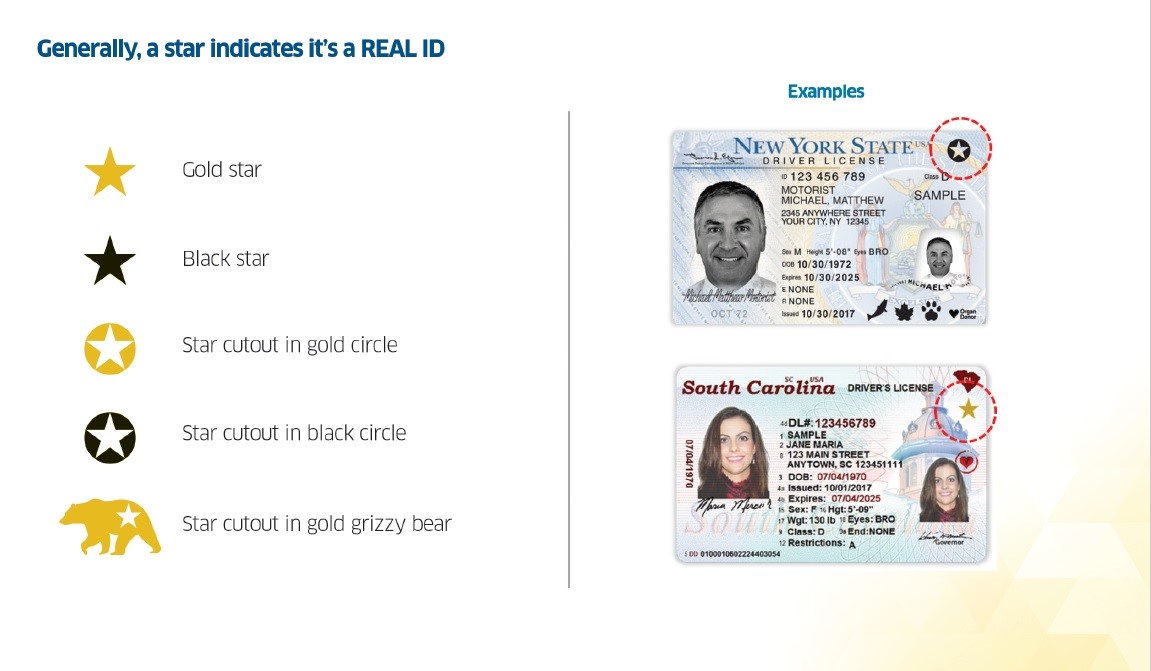As of October 1, 2020, the National Institutes of Health (NIH) will no longer accept identification that fails to meet the minimum requirements and issuance standards for federal recognition per the REAL ID Act of 2005. As a federal agency, the NIH must adhere to the same standards that the Transportation Safety Administration (TSA) requires for boarding an airplane.
As of the publication of this article on November 18, 2019, the REAL ID enforcement at NIH is 318 days away.
The REAL ID Act of 2005 established minimum security standards for state-issued driver's licenses and identification cards and prohibits federal agencies, such as NIH, from accepting for official purposes licenses and identification cards that do not meet these standards as of October 1, 2020.
Common reasons to obtain REAL ID include:
- You want to fly with only your state-issued ID (e.g., driver's license)
- You need to visit a secure facility, such as the NIH, and do not have a Personal Identity Verification (PIV) card, passport or another approved ID.
Approved Forms of ID Required to Enter NIH Facilities on October 1, 2020:
- REAL ID Driver's License or State Identification Card
- Passport or Passport Card
- HSPD-12 PIV or CAC Card
- Permanent Resident Card
- Federally Recognized, Tribal-Issued Photo ID
- Canadian Provincial Driver's License or Indian and Northern Affairs Canada Card
- USCIS Employment Authorization Card (I-766)
- Other Less Common Documents (e.g. Merchant Mariner Credential)
Reasons you may not need a REAL ID include:
- You only need your ID for purposes of identification and have another form of ID (e.g., PIV card or U.S. Passport) for accessing federal facilities like NIH.
- You do not mind bringing your passport along when you fly or visit federal facilities starting October 1, 2020.

REAL ID was implemented by each state's department of motor vehicles. As a result, driver's licenses and the identification cards are not uniform in appearance across states. However, all REAL ID compliant state driver's licenses will have a star imprinted in the upper right-hand corner to signify it is REAL ID compliant. Additionally, the states chose how to apply REAL ID measures to the entire state population. Maryland and DC are requiring all individuals who are eligible for REAL ID-compliant documents to obtain a REAL ID-compliant driver's license or identification card. Maryland and DC offer "limited use" credentials, which are not acceptable for flying domestically in the United States or for entering an NIH facility. Virginia allows its residents the option to obtain a REAL ID-compliant credential, which can be used to enter an NIH facility. Virginia also allows a non-REAL ID-compliant credential for driver's licenses or identification cards that are not acceptable for federal purposes.
Starting October 1, 2020, NIH can only accept REAL ID compliant driver's licenses and identification cards for accessing NIH facilities.
- Children under the age of 17 do not need ID if accompanied by guardian with a valid ID
-
Patients, regardless of identification, will continue to be allowed on campus upon verification of their status on a protocol with the Admissions Office at the Clinical Center.
- Patient Caregivers will need to have valid identification
